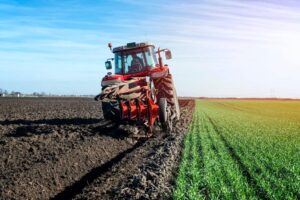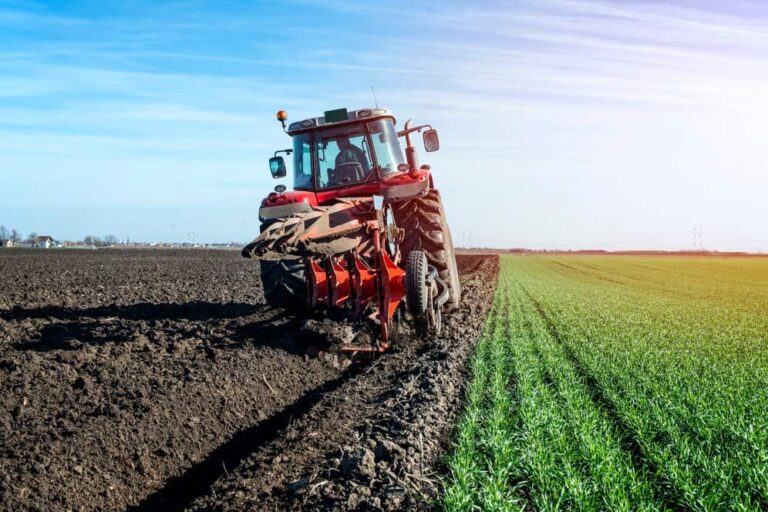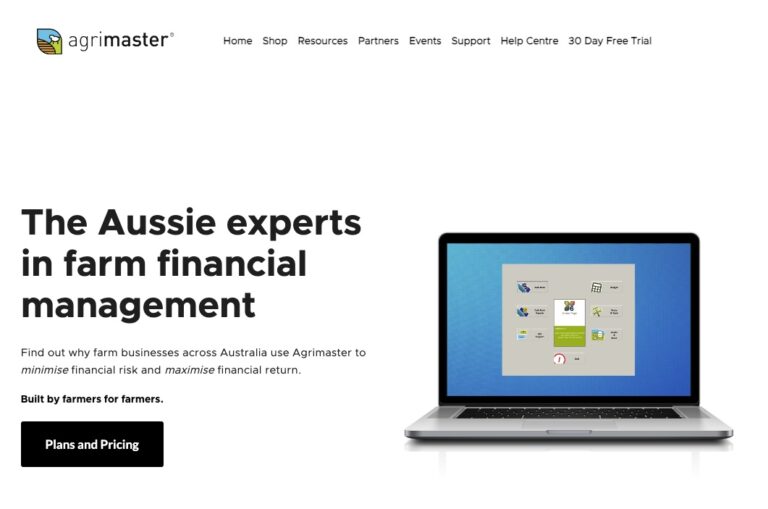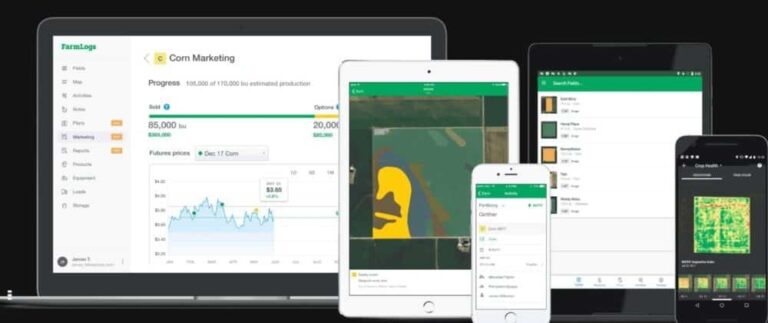Introduction
Embarking on a journey through the world of farm operations management can often feel like navigating through a complex maze. It’s a dynamic field that combines traditional farming knowledge with modern techniques and technologies. In this article, we delve into the key components of farm operations management, exploring each aspect with real data and practical insights.
Understanding the Soil of Success: Planning and Strategy
In the realm of farm operations, strategic planning lays the foundation for success. It involves several key components:
| Aspect | Description |
|---|---|
| Objective Setting | Establishing clear, achievable goals for your farm is essential. These objectives provide a direction for the farm’s operations and help in measuring progress over time. Goals may include increasing crop yield, diversifying product offerings, or improving sustainability practices. |
| Resource Assessment | Analyzing available resources such as land, labor, and capital is crucial in developing a strategic plan. Understanding the strengths and limitations of these resources enables farmers to make informed decisions about how to allocate them effectively. This assessment may involve evaluating the quality of the land, assessing the skills and availability of labor, and determining the financial resources needed to support farm operations. |
| Market Research | Understanding market trends is vital for making informed decisions about what crops to grow and how to market them effectively. Conducting market research allows farmers to identify opportunities for growth, anticipate changes in consumer demand, and stay competitive in the marketplace. This may involve analyzing consumer preferences, studying market prices, and monitoring industry trends. |
| Risk Management | Identifying potential risks and developing strategies to mitigate them is essential for protecting the long-term viability of the farm. Risks in farming can include weather events, pest and disease outbreaks, fluctuations in market prices, and changes in government regulations. By proactively identifying these risks and implementing risk management strategies, such as diversifying crops or purchasing insurance, farmers can minimize the impact of adverse events on their operations. |
Sowing the Seeds of Efficiency: Crop Management
Effective crop management is crucial for any farm operation. It encompasses:
Crop Selection
Crop selection serves as the foundation of successful farming, influencing overall profitability and sustainability. Several factors must be considered when choosing crops:
- Soil Type: Different crops thrive in specific soil conditions. Conduct soil tests to assess pH levels, nutrient content, and drainage capacity;
- Climate: Select crops that are well-suited to the local climate. Consider temperature fluctuations, rainfall patterns, and length of growing season;
- Market Demand: Identify crops with high demand in local or global markets to ensure profitability. Research consumer preferences, emerging trends, and potential niche markets.
Planting Strategies
Strategic planting plays a crucial role in maximizing yield and optimizing resource utilization. Key considerations include:
- Planting Dates: Determine the optimal timing for planting based on climate conditions and crop requirements. Aim to avoid adverse weather events and optimize growth periods;
- Planting Patterns: Choose appropriate spacing and arrangement to facilitate efficient use of space and resources. Consider factors such as crop rotation, intercropping, and companion planting to enhance soil fertility and pest management;
- Seed Selection: Use high-quality seeds that are adapted to local conditions and have desirable traits such as disease resistance, high yield potential, and uniform germination.
Pest and Disease Control
Effective pest and disease management is essential for safeguarding crop health and minimizing yield losses. Implement integrated pest management (IPM) strategies that combine preventive measures, cultural practices, biological controls, and judicious use of pesticides:
- Monitoring: Regularly inspect crops for signs of pest infestation or disease symptoms. Use traps, pheromone lures, and scouting techniques to identify pest populations and assess damage levels;
- Cultural Practices: Employ practices such as crop rotation, sanitation, and weed management to disrupt pest life cycles and reduce habitat suitability;
- Biological Controls: Introduce natural predators, parasites, or pathogens to regulate pest populations. Encourage biodiversity and habitat diversity to support beneficial organisms;
- Chemical Control: Use pesticides judiciously and adhere to recommended application rates and timings. Prioritize less toxic options and consider the potential impact on non-target organisms and environmental safety.
Irrigation and Fertilization
Optimizing water and nutrient management is essential for achieving healthy crop growth and maximizing yields. Consider the following strategies:
- Irrigation: Implement efficient irrigation systems such as drip irrigation, sprinklers, or furrow irrigation to deliver water directly to the root zone while minimizing evaporation and runoff;
- Water Management: Monitor soil moisture levels regularly and adjust irrigation schedules accordingly. Consider factors such as rainfall, evapotranspiration rates, and soil texture;
- Fertilization: Conduct soil tests to assess nutrient deficiencies and tailor fertilizer applications to crop needs. Use organic amendments, cover crops, and crop residues to improve soil fertility and structure.
Real Data Insight
Leverage data-driven insights to refine crop management practices and optimize decision-making processes. Utilize tools such as farm management software, remote sensing technologies, and precision agriculture techniques to:
- Monitor Performance: Track key performance indicators such as yield levels, input costs, and resource utilization to evaluate the effectiveness of management practices;
- Predictive Analytics: Use historical data and predictive models to anticipate crop performance, pest outbreaks, and market trends. Incorporate weather forecasts, satellite imagery, and soil sensors to enhance decision support systems;
- Continuous Improvement: Embrace a culture of continuous learning and adaptation based on empirical evidence and experimentation. Collaborate with agricultural experts, researchers, and extension services to stay abreast of latest innovations and best practices.
Fueling Growth: Financial Management

Financial management in farm operations includes:
Budgeting
Budgeting is the process of creating a detailed financial plan that outlines anticipated expenses and revenues for a specific period. It provides a roadmap for allocating resources and managing cash flow effectively. Key components of budgeting include:
- Expense Projection: Identify all anticipated expenses related to crop production, livestock care, equipment maintenance, and overhead costs such as utilities and insurance;
- Revenue Estimation: Estimate potential revenues based on projected crop yields, market prices, government subsidies, and other income sources;
- Contingency Planning: Factor in unexpected expenses or revenue fluctuations by setting aside reserves or creating contingency funds;
- Regular Review: Review and update budgets regularly to reflect changes in market conditions, input costs, and production plans.
Cost Tracking
Cost tracking involves monitoring and analyzing the costs associated with various aspects of farm operations. By closely tracking expenses, farmers can identify areas for cost reduction, improve efficiency, and optimize resource allocation. Key considerations for cost tracking include:
- Input Costs: Track expenses related to seeds, fertilizers, pesticides, and other agricultural inputs. Compare prices from different suppliers to identify cost-saving opportunities;
- Labor Costs: Monitor labor expenses including wages, benefits, and overtime to ensure labor efficiency and compliance with labor laws;
- Equipment Costs: Track costs associated with equipment purchases, maintenance, repairs, and depreciation. Evaluate equipment utilization and consider alternatives such as leasing or renting to minimize costs;
- Overhead Costs: Analyze overhead expenses such as utilities, property taxes, insurance premiums, and administrative costs. Look for ways to reduce overhead through efficiency improvements or cost-sharing arrangements.
Revenue Forecasting
Revenue forecasting involves predicting future revenues based on market trends, demand projections, and production estimates. Accurate revenue forecasts help farmers make informed decisions regarding production levels, marketing strategies, and investment priorities. Key steps in revenue forecasting include:
- Market Analysis: Research market trends, consumer preferences, and demand forecasts for agricultural products. Monitor commodity prices, export trends, and regulatory changes that may impact revenues;
- Production Forecasting: Estimate crop yields, livestock production, and other revenue-generating activities based on historical data, agronomic factors, and weather forecasts;
- Sales Projections: Develop sales projections by considering factors such as pricing strategies, sales channels, contract commitments, and anticipated market demand;
- Risk Assessment: Identify and assess potential risks that may affect revenue projections, such as weather-related events, market volatility, or changes in input costs.
Investment Analysis
Investment analysis involves evaluating the profitability and feasibility of new technologies, equipment upgrades, or expansion projects. By conducting thorough investment analysis, farmers can make sound investment decisions that enhance productivity, reduce costs, and improve competitiveness. Key aspects of investment analysis include:
- Cost-Benefit Analysis: Compare the costs and benefits of investment alternatives to determine their financial viability. Consider both short-term and long-term returns on investment, as well as intangible benefits such as risk mitigation or environmental sustainability;
- Return on Investment (ROI): Calculate the expected ROI for potential investments by estimating future cash flows, discounting for risk and time value of money, and considering alternative uses of capital;
- Risk Analysis: Assess the risks associated with investment decisions, including market risks, operational risks, and regulatory risks. Implement risk mitigation strategies such as diversification, insurance, or contractual arrangements;
- Lifelong Learning: Stay informed about new technologies, market trends, and best practices through continuous education, networking, and collaboration with industry experts and financial advisors.
Harvesting Data: Technology in Farm Operations
Technology plays a pivotal role in modern farm operations. Key tech components include:
Precision Agriculture
Precision agriculture employs advanced technologies such as GPS (Global Positioning System) and GIS (Geographic Information System) to precisely manage spatial and temporal variability within fields. By leveraging precise field mapping and data analytics, farmers can optimize inputs, reduce waste, and maximize yields. Key aspects of precision agriculture include:
- GPS-guided Equipment: Utilize GPS technology to precisely navigate farm equipment such as tractors, planters, and sprayers. This enables accurate placement of seeds, fertilizers, and pesticides, minimizing overlaps and optimizing resource utilization;
- Variable Rate Technology (VRT): Adjust input application rates based on site-specific conditions such as soil fertility, moisture levels, and crop requirements. VRT allows for targeted application of inputs, resulting in cost savings and environmental benefits;
- Yield Monitoring: Install yield monitors on harvesters to capture spatial variations in crop yields. Analyze yield maps to identify productivity hotspots and optimize management practices for maximum profitability.
Drones and Sensors
Drones and sensors provide farmers with valuable real-time data on crop health, soil conditions, and environmental parameters. These technologies enable proactive decision-making, early detection of problems, and targeted interventions. Key applications of drones and sensors include:
- Aerial Imaging: Capture high-resolution aerial imagery of fields using drones equipped with multispectral or thermal cameras. Analyze imagery to assess crop health, detect pest infestations, and identify areas requiring irrigation or nutrient management;
- Soil Sensors: Deploy soil sensors to monitor key soil parameters such as moisture content, temperature, and nutrient levels. Use sensor data to optimize irrigation scheduling, tailor fertilizer applications, and prevent nutrient leaching or runoff;
- Weather Stations: Install weather stations to collect real-time data on temperature, humidity, rainfall, and wind speed. Integrate weather data with other farm management systems to improve decision-making related to planting, harvesting, and crop protection.
Farm Management Software
Farm management software platforms streamline farm operations by centralizing data management, facilitating communication, and providing analytical tools for decision support. These digital platforms enable farmers to manage resources more efficiently, optimize workflows, and enhance collaboration. Key features of farm management software include:
- Data Integration: Integrate data from various sources such as sensors, equipment monitors, and weather stations into a unified platform. This allows for comprehensive analysis and visualization of farm data to inform decision-making;
- Task Planning and Tracking: Plan, schedule, and track farm activities such as planting, spraying, and harvesting using digital calendars and task management tools. Monitor progress in real-time and allocate resources effectively to meet production targets;
- Inventory Management: Manage inventory levels of inputs such as seeds, fertilizers, pesticides, and equipment parts. Set up automated alerts for reordering supplies and optimize inventory turnover to minimize stockouts and reduce carrying costs.
Automated Machinery
Automated machinery, including autonomous tractors, harvesters, and robotic systems, revolutionizes farm operations by increasing efficiency, reducing labor costs, and improving precision. These technologies automate repetitive tasks and enable round-the-clock operation, enhancing productivity and profitability. Key aspects of automated machinery include:
- Autonomous Vehicles: Deploy autonomous tractors and implements equipped with GPS, sensors, and onboard computers to perform tasks such as tillage, planting, and spraying with minimal human intervention;
- Robotic Harvesting: Implement robotic systems for harvesting fruits, vegetables, and specialty crops. These systems use computer vision, machine learning, and robotic arms to selectively harvest ripe produce, reducing labor requirements and improving quality;
- Smart Equipment: Equip farm machinery with advanced sensors and telematics systems to monitor performance, diagnose problems, and optimize maintenance schedules. Utilize predictive analytics to prevent breakdowns and minimize downtime during critical production periods.
Weathering Storms: Risk Management

Risk management in farm operations includes:
Insurance Coverage
Insurance coverage is a vital tool for protecting against financial losses resulting from crop failures, natural disasters, or other unforeseen events. By purchasing appropriate insurance policies, farmers can safeguard their investments and ensure financial stability. Key types of insurance coverage in agriculture include:
- Crop Insurance: Crop insurance provides financial compensation to farmers for losses caused by adverse weather conditions, pests, diseases, or other perils. Policies may cover yield losses, revenue losses, or both, depending on the type of coverage selected;
- Livestock Insurance: Livestock insurance protects against losses resulting from animal mortality, theft, or accidental injury. Policies may also cover additional risks such as disease outbreaks or adverse weather events affecting feed availability;
- Property Insurance: Property insurance covers damage or loss of farm buildings, equipment, and infrastructure due to fire, vandalism, theft, or natural disasters such as floods or tornadoes. It helps farmers recover quickly and resume operations after property-related losses.
Diversification
Diversification is a risk management strategy that involves spreading risks across different crops, livestock species, markets, or activities. By diversifying their operations, farmers can reduce exposure to specific risks and improve overall resilience. Key aspects of diversification include:
- Crop Diversification: Planting multiple crops with different growth cycles, market demands, and susceptibility to pests and diseases helps mitigate the impact of adverse weather or market fluctuations on overall farm income;
- Livestock Diversification: Raising diverse livestock breeds or species with varying production cycles, market values, and resistance to diseases helps mitigate risks associated with price volatility, disease outbreaks, or supply chain disruptions;
- Market Diversification: Selling products through multiple marketing channels such as farmers’ markets, direct sales, wholesale contracts, or value-added processing reduces dependence on a single market outlet and enhances revenue stability.
Emergency Planning
Emergency planning involves developing proactive strategies and protocols to prepare for and respond to unforeseen events, emergencies, or disruptions. By having contingency plans in place, farmers can minimize the impact of crises and ensure continuity of operations. Key components of emergency planning include:
- Risk Assessment: Identify potential hazards, vulnerabilities, and risks that could threaten farm operations, such as severe weather events, disease outbreaks, or supply chain disruptions;
- Business Continuity Planning: Develop contingency plans and protocols to maintain essential farm functions and services during emergencies. Establish backup systems for critical operations such as irrigation, power supply, and livestock care;
- Communication and Coordination: Establish communication channels and protocols for sharing information, coordinating responses, and seeking assistance during emergencies. Maintain contact information for key stakeholders, emergency services, and support organizations.
Conclusion
Farm operations management is a multifaceted and dynamic field, requiring a blend of traditional knowledge and modern techniques. By focusing on these key components, farmers can navigate the challenges and opportunities of the industry, ensuring sustainable and profitable operations. The journey through farm operations management, though complex, is ultimately rewarding, leading to a thriving agricultural enterprise.
FAQ
Balancing efficiency with sustainability is key. Each aspect, from financial management to crop selection, plays a crucial role.
Technology has revolutionized farm operations through precision agriculture, automation, and data analytics, leading to increased efficiency and reduced environmental impact.
Yes, by focusing on niche markets, sustainable practices, and community engagement, small farms can carve out a successful space in the industry.
Weather variability, market fluctuations, and labor issues are some of the biggest challenges faced by farmers today.
Sustainability is crucial for long-term viability. It involves not just environmental stewardship but also economic and social responsibility.










